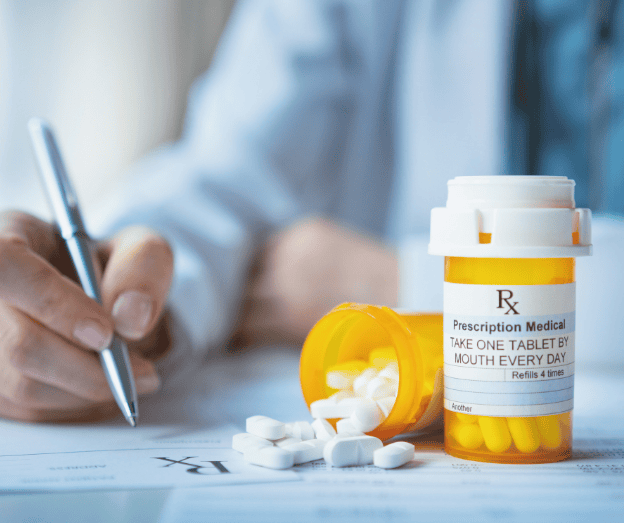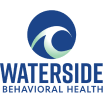What Is Brexanolone? Key Facts on Its Role in Postpartum Depression
Brexanolone is a medication developed specifically for postpartum depression, which affects women after childbirth.
It works as a positive allosteric modulator of GABA-A receptors, aiming to restore brain chemical balance that gets thrown off by hormonal changes during and after pregnancy. This mechanism sets it apart from traditional antidepressants.
It’s given as a continuous intravenous infusion over 60 hours and requires strict medical supervision because of possible side effects, like sedation.
When the FDA approved brexanolone, it was the first treatment made just for postpartum depression—finally addressing a real gap in care for new mothers.
Brexanolone Overview and Mechanism
Brexanolone targets postpartum depression directly.
It acts on neurotransmitter systems to quickly reduce depressive symptoms, and it’s quite different from typical antidepressants in how it works and how it’s given.
How Brexanolone Works
This is about to get technical…
Brexanolone is a positive allosteric modulator of the GABAA receptor, which is a major receptor for gamma-aminobutyric acid (GABA) in the brain.
By boosting GABA’s effects, it increases chloride ion flow into neurons, which calms down overactive brain cells.
This action helps correct GABAA receptor problems seen in postpartum depression, possibly tied to changing levels of the neurosteroid allopregnanolone.
Since brexanolone mimics allopregnanolone, it stabilizes GABAA receptor function and brings both calming and antidepressant effects.
The medication is given intravenously over 60 hours, mainly because of its pharmacokinetics and the need for careful monitoring.
Brand Name Zulresso
Brexanolone goes by the brand name Zulresso.
It was the first FDA-approved treatment made just for postpartum depression.
Zulresso treatment means a hospital stay in a certified facility, mostly due to risks like sedation or even loss of consciousness.
The dosing is a carefully controlled IV infusion lasting about 2.5 days, and it’s only available through a REMS program to keep patients safe.
Comparison to Other Antidepressants
Traditional antidepressants like SSRIs work on monoamine neurotransmitters and can take weeks to kick in, while brexanolone works on the GABA system and offers much faster relief.
SSRIs are oral meds taken daily, but brexanolone is a one-time, extended IV infusion. Its mechanism—neurosteroid modulation—sets it apart from drugs like ganaxolone, which is still being studied.
This targeted approach is a real option for women who don’t respond to standard antidepressants or want to avoid oral meds during postpartum.
Clinical Use in Postpartum Depression
Brexanolone is used to treat moderate to severe postpartum depression in adult women.
Because of possible side effects, it must be given in a controlled setting. The drug can bring relief fast, but patients need to be watched closely throughout treatment.
Effectiveness for Postpartum Depression
Brexanolone acts as a GABA-A receptor modulator, aiming to fix the hormonal imbalance after childbirth.
It’s shown to lower depression scores significantly in women with PPD, with many noticing improvement within days—much quicker than with typical antidepressants.
Clinical trials back up its ability to bring about rapid improvement or even remission in postpartum depression symptoms.
Some women see benefits that last up to 30 days after finishing the infusion.
Treatment Protocol and Administration
Brexanolone is given as a continuous IV infusion over 60 hours.
Because it’s a complex process, treatment takes place in specialized healthcare centers, and patients are monitored throughout.
The infusion keeps allopregnanolone levels similar to those during the third trimester of pregnancy.
This dosing approach helps the brain’s receptors adjust, which seems tied to symptom relief.
Clinical Trial Findings
Randomized controlled trials have shown brexanolone’s benefits for postpartum depression.
Depression scores dropped significantly within 24 to 48 hours of starting treatment, and many women saw those benefits stick around for at least a month.
Compared to placebo, brexanolone consistently delivered greater symptom relief.
Side effects did pop up but were generally manageable with proper monitoring.
Precautions and Monitoring
Because of risks like sedation and loss of consciousness, brexanolone is only available through a REMS program.
Continuous monitoring—including pulse oximetry—is required during the infusion.
Healthcare staff keep a close eye on patients to catch any side effects early.
Sedation is the main concern, and if it gets severe, immediate action is needed. Patients shouldn’t drive or use machinery during and right after treatment—just to be safe.
Frequently Asked Questions
Brexanolone is a neuroactive steroid given intravenously, made specifically for postpartum depression in adults.
It targets GABA-A receptors, and the treatment involves a tightly controlled 60-hour IV infusion. Side effects are usually manageable but do require close observation. The cost is high, and insurance can be a hurdle.
How does Brexanolone work to treat its intended conditions?
Brexanolone is a water-soluble version of allopregnanolone, which is a breakdown product of progesterone.
It modulates brain activity by enhancing both synaptic and extrasynaptic GABA-A receptors, helping restore the brain’s inhibitory control that can get disrupted in postpartum depression.
What are the common side effects associated with Brexanolone?
Common side effects include dizziness, drowsiness or sleepiness, dry mouth, hot flushes, and sometimes even loss of consciousness.
Patients are closely watched during the infusion to manage these risks, especially sedation.
In what forms is Brexanolone available for administration?
Brexanolone is only available as an IV infusion.
It comes in 100 mg/20 ml single-use vials that need to be diluted before use. The infusion runs continuously for about 60 hours and is only given at certified healthcare centers.
What are the primary uses of Brexanolone in medical treatment?
Brexanolone is indicated for moderate to severe postpartum depression in adult women.
It’s the first FDA-approved drug for this condition and targets symptoms that show up after childbirth.
What is the standard dosage for Brexanolone for its approved indications?
The usual protocol starts at 30 mcg/kg/hour for the first 4 hours, then ramps up to 60 mcg/kg/hour from hours 4 to 24, and then 90 mcg/kg/hour until hour 52.
After that, it’s tapered to 60 mcg/kg/hour for 4 hours and 30 mcg/kg/hour for the last 4 hours. If side effects happen, the dose can be adjusted.
How much does Brexanolone typically cost, and is it covered by insurance?
Brexanolone isn’t cheap—it usually costs several thousand dollars for just one course of treatment. Insurance coverage is all over the place and often needs prior authorization.
Because of the price and how it’s given, people often have to jump through hoops for insurance approval or look into financial assistance. It’s a lot to navigate, honestly.
Ready to Talk?
If you or someone you love is struggling after birth, you are not alone – and you don’t have to wait it out. Waterside offers compassionate postpartum mental health support, including therapy, medication management, and flexible Intensive Outpatient Programs in Plymouth County and Bristol County. Call 774-619-7750 to learn how Waterside Behavioral Health supports people who are ready to stop spinning their wheels and start moving forward—with clarity, structure, and real support.










